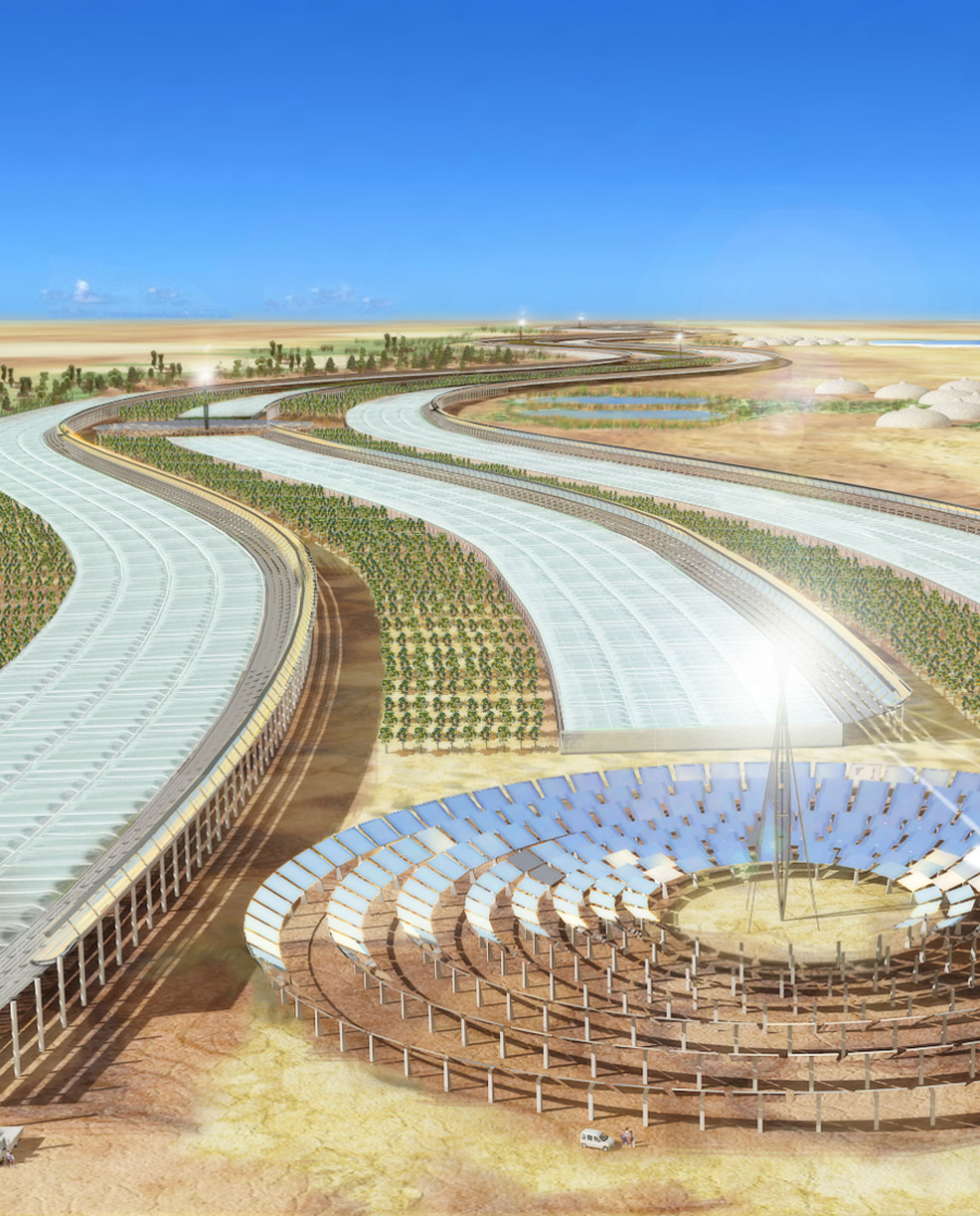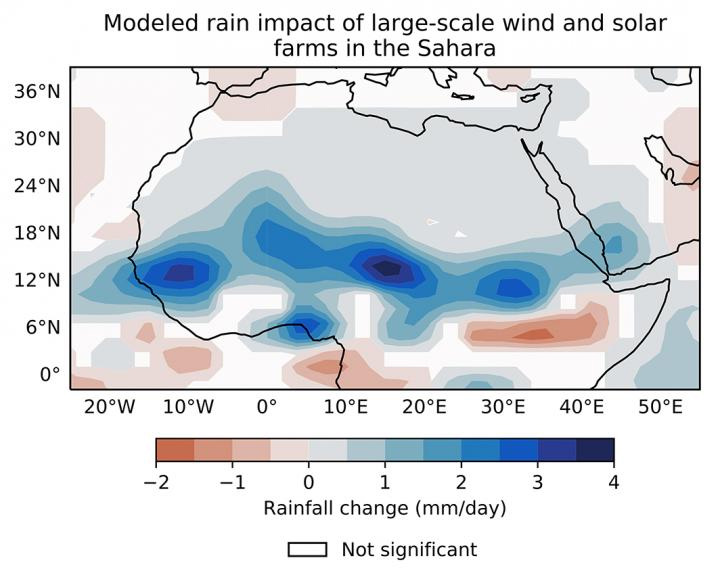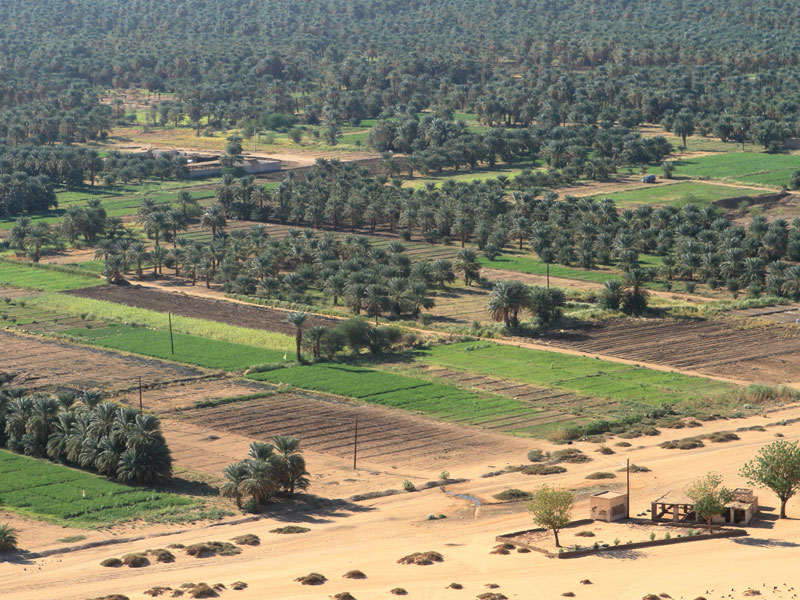
8th September 2018 Large-scale solar and wind power could help in "greening" the Sahara A study by the University of Illinois at Urbana-Champaign finds that large-scale solar farms and wind turbines in the Sahara desert would have a major impact on rainfall, vegetation and temperatures – potentially greening the region.
Wind and solar farms are known to have local effects on heat, humidity and other factors that may be beneficial – or detrimental – to the regions in which they are situated. A new climate modelling study finds that a massive wind and solar installation in the Sahara Desert and neighbouring Sahel would increase local temperature, precipitation and vegetation. Overall, the researchers report, the effects would likely benefit the region. The study, published yesterday in the journal Science, is among the first to model the climate effects of wind and solar installations while also taking into account how vegetation responds to changes in heat and precipitation, says lead author Yan Li, a postdoctoral researcher in natural resources and environmental sciences at the University of Illinois. "Previous modelling studies have shown that large-scale wind and solar farms can produce significant climate change at continental scales. But the lack of vegetation feedbacks could make the modelled climate impacts very different from their actual behaviour," said Li. The new study, co-led with Eugenia Kalnay and Safa Motesharrei at the University of Maryland, focused on the Sahara for several reasons. "We chose it because it is the largest desert in the world; it is sparsely inhabited; it is highly sensitive to land changes; and it is in Africa and close to Europe and the Middle East, all of which have large and growing energy demands," explains Li. The wind and solar farms simulated in this study would cover more than 9 million sq km – essentially the whole of the desert – and generate, on average, approximately 4,200 terawatt hours (TWh) and 110,000 terawatt hours (TWh) of electrical power, respectively. Worldwide electricity generation is today only 25,000 terawatt hours (TWh), so this is obviously much more energy than is currently needed. However, the world could reach this level of electricity consumption by the 2080s, based on current trends. The long-term implications of this study are therefore worth considering.
The computer model revealed these large-scale wind farms enhancing an effect known as "vertical mixing" – the upward and downward movements of air that occur as a result of temperature gradients. Precipitation increased by as much as 0.25 millimetres per day in regions with wind farm installations. "This was a doubling of precipitation over that seen in the control experiments," Li says. Further to the south, meanwhile, in the Sahel region, the average rainfall increased by 1.12 millimetres per day where large-scale wind farms were present. "This increase in precipitation, in turn, leads to an increase in vegetation cover – creating a positive feedback loop," Li adds. Solar farms had a similar positive effect on temperature and precipitation, the team found. Unlike the wind farms, however, the solar arrays had very little effect on wind speed. "We found that the large-scale installation of solar and wind farms can bring more rainfall and promote vegetation growth in these regions," said co-author Eugenia Kalnay. "The rainfall increase is a consequence of complex land-atmosphere interactions that occur because solar panels and wind turbines create rougher and darker land surfaces. "The increase in rainfall and vegetation, combined with clean electricity as a result of solar and wind energy, could help agriculture, economic development and social well-being in the Sahara, Sahel, Middle East and other nearby regions," added Motesharrei.
Comments »
If you enjoyed this article, please consider sharing it:
|









